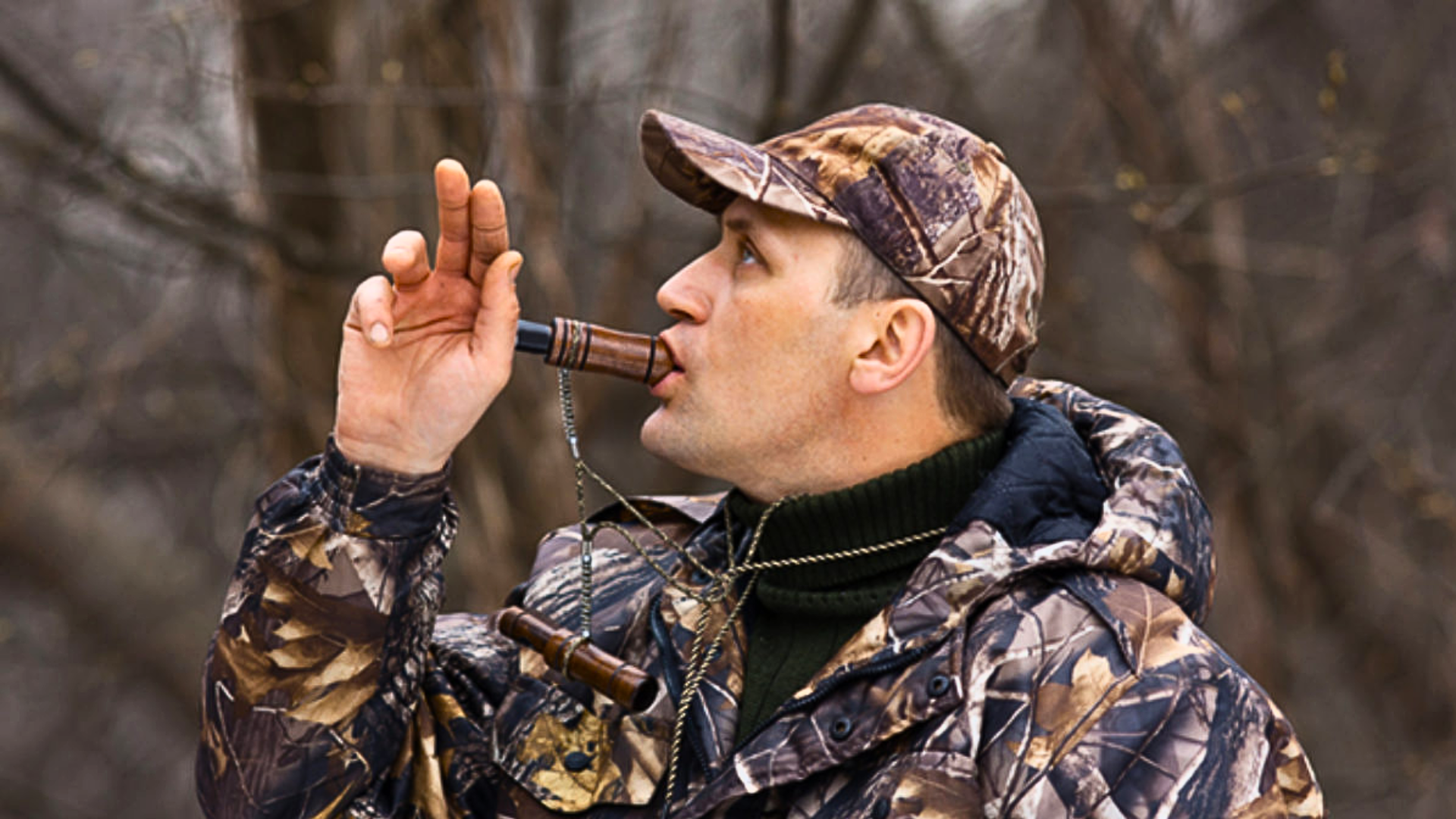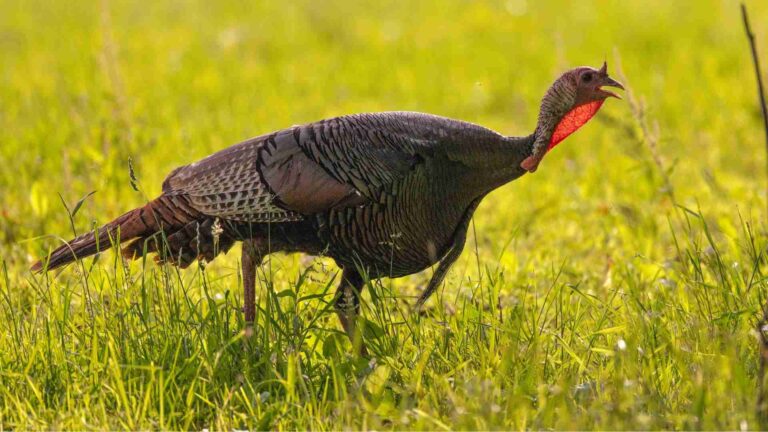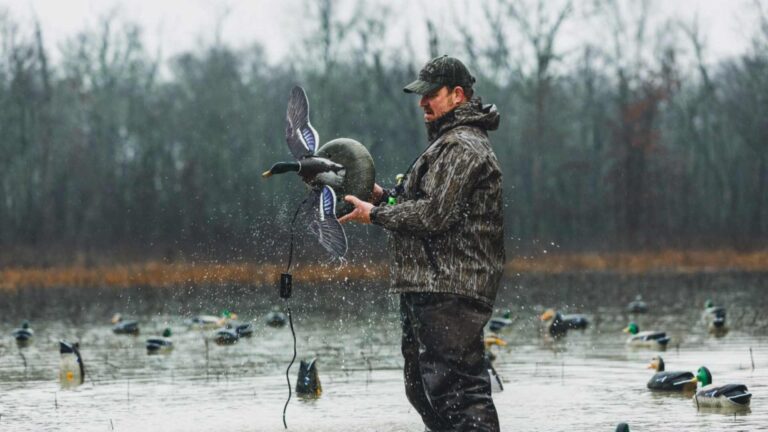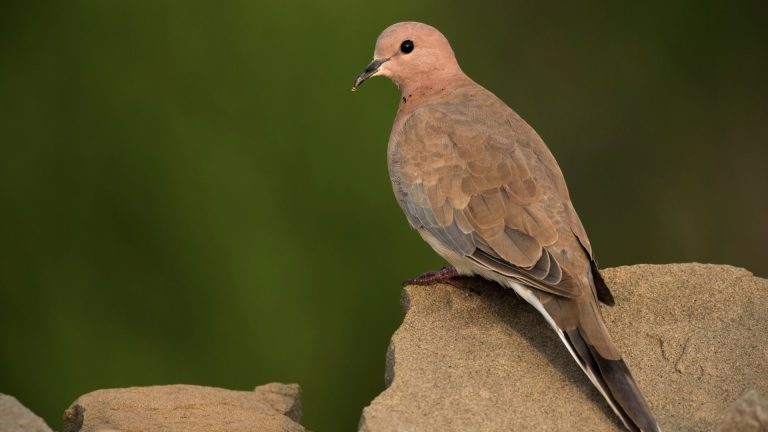How to Blow a Duck Call the Right Way
Mastering the art of duck calling is a crucial skill for any waterfowl hunter.
A well-executed duck call can help bring ducks to your location, increasing your chances of a successful hunt.
If you’re a beginner learning how to blow a duck call, this comprehensive guide will provide step-by-step instructions, tips, and techniques to help you get started on the right foot!
Selecting the Right Duck Call
Choose a quality duck call that suits your preferences and skill level. There are various types of duck calls, including single reed, double reed, and even specialized calls for specific species.
Experiment with different calls to find one that feels comfortable and produces the desired sounds.
Duck Commander Specialty Series Realistic Sounding Duck Call
➵ 6 Calls in 1!
➵ One of the easiest calls to use
➵ Teal Drake, Pintail Drake, Mallard Drake, Wigeon Drake, Dove & Quail Calls
➵ Brings in the tough ones! Even the most shy ducks seem to get a little more comfortable by the simple whistle of this little call
How to Blow a Duck Call
Proper Hand Placement
When learning how to blow a duck call, the first step is to understand the importance of proper hand placement.
Hold the duck call with your dominant hand, using a gentle grip while positioning your thumb on top for stability. The call should rest against the roof of your mouth, with the tone board or reed assembly facing forward.
It’s crucial to strike a balance between a secure grip and not holding too tightly, as this allows for proper airflow and control during calling.
Mastering the Quack
The quack is the cornerstone of duck calling and a sound you must master.
To produce a quack, utilize your diaphragm to force air through the call.
Begin with short, crisp bursts of air, saying “ticka-ticka” or “ta-ta” into the call. As you practice, focus on varying the speed and rhythm to create authentic quack sequences.
With time and patience, you’ll be able to produce realistic and enticing quacks that attract nearby ducks.
Adding Feeding Chuckles
Feeding chuckles replicate the sound of ducks contentedly feeding and can enhance the realism of your calling.
To create feeding chuckles, make a rolling, stuttering sound by alternating between tongue and throat pressure.
Play around with different patterns and speeds to achieve a convincing feeding sound. Incorporating feeding chuckles into your repertoire can entice ducks in the area, making your calling more effective.
Incorporating Greeting Calls
Greeting calls are essential for grabbing the attention of passing ducks and inviting them to investigate further. They consist of a series of high-pitched, rapid notes.
Start by producing a few quick “kwek-kwek” or “ek-ek” sounds, and gradually increase the speed and intensity. Regular practice is crucial for attaining consistent and clear greeting calls that can attract ducks from afar.
Mastering Comeback Calls
Comeback calls are louder and more forceful than other calls, imitating the sound of a duck trying to entice other ducks to return to the area.
Begin with a few strong, drawn-out “hey” or “hut” sounds, followed by a series of rapid, high-pitched quacks.
Developing control over the volume and inflection of your comeback calls will make them more convincing and appealing to distant ducks.
Practicing Cadence and Sequences
Ducks often produce a variety of sounds in continuous patterns, and mastering cadence and sequences is essential for authentic duck calling.
Once you’re comfortable with individual duck sounds, practice combining them into cohesive cadences and sequences. Experiment with different combinations and timings to mirror natural duck behavior.
By honing your skills in creating realistic sequences, you can effectively communicate with ducks, increasing your chances of a successful hunt.
Field Application and Real-World Practice
Taking your duck calling skills from the practice ground to the field is a thrilling yet challenging endeavor.
In real-world hunting situations, ducks are perceptive and can quickly distinguish between genuine calls and poorly executed ones. Field application of your calling abilities requires adaptability and finesse.
Observe ducks in their natural habitat to better understand their behaviors and vocalizations. Practice blending in with the surroundings and mimicking their sounds to attract ducks closer. When learning how to blow a duck call, getting out in the field to get experience should be a priority.
Use different calls strategically, such as quacks, feeding chuckles, greeting calls, and comeback calls, based on the ducks’ responses and environmental conditions.
It’s essential to remain patient and attentive, adjusting your approach as needed to increase your chances of success. Regular practice in real-world scenarios will sharpen your skills and make you a more proficient and effective duck caller in the wild.
Conclusion
Learning how to blow a duck call can be frustrating, but with dedication and practice, you can become really proficient.
Remember to choose the right call, learn the basic sounds, practice proper hand placement, and master various calls such as the quack, feeding chuckles, greeting calls, and comeback calls. Incorporate cadences and sequences, and apply your skills in real-world hunting situations.
Happy hunting!
Cover image source: Outdoor Discovery







Hi, great post There is a problem with your website on Internet Explorer. Despite being the most popular browser, many people will not be able to view your excellent work because of this issue.